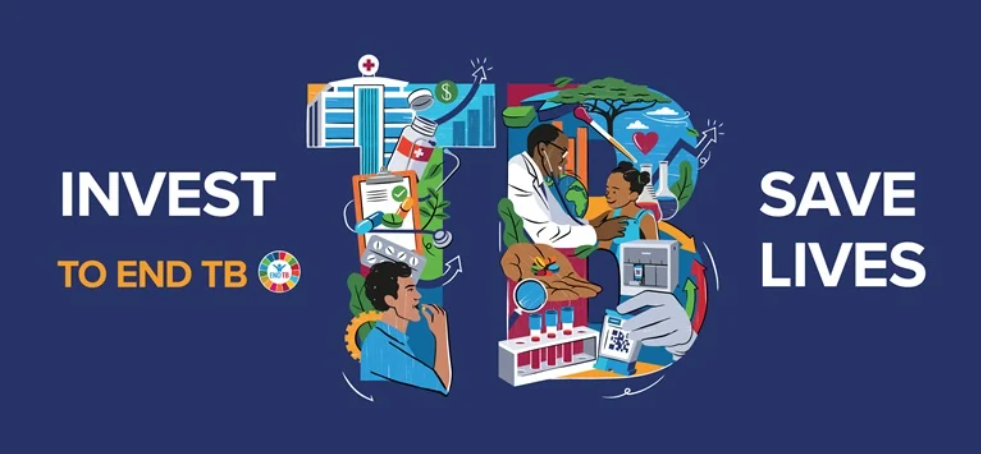
24 Mar AIGHD highlights TB R&D roadmap for World TB Day
Today, 24 March, marks World TB Day, an annual day that commemorates the date in 1882 when Dr. Robert Koch announced his discovery of Mycobacterium tuberculosis, the bacillus that causes tuberculosis. This year’s theme is “Invest in TB. Save Lives.” This theme is meant to convey the urgent need to invest in resources to fight against TB and achieve the goal of ending TB by 2050. Tuberculosis is an infectious disease that affects millions of people worldwide. To eradicate the disease, innovative, effective, and equitable vaccines are necessary. Physician-epidemiologist Frank Cobelens, and chairman of the board of the Amsterdam Institute of Global Health and Development (AIGHD), discussed the urgency of a new vaccine and lessons learned from the COVID pandemic. “Covid has shown us that something like this does not have to take years.”
Before the coronavirus pandemic, TB was the deadliest infectious disease in the world. Every year, 1.5 million people die from the infectious disease and another 10 million become infected. As a result, The World Health Organization (WHO) mapped out a strategy for a world without TB by 2050. An important step in this direction is well-functioning vaccines. In collaboration with the WHO and the European & Developing countries Clinical Trials Partnership (EDCTP), professor, Frank Cobelens, drew up a roadmap for this goal. The ambitious plan was recently published in The Lancet Infectious Diseases.
Why is it important to develop new vaccines against TB?
Despite all of our efforts, we have not seen a sharp decrease in the number of infections, so we must change our approach. There is currently a vaccine against bacteria that causes TB, the BCG vaccine. But that only protects infants and young children from the serious consequences of the disease. With increasing age, it becomes ineffective, even though it is adolescents who are often most affected by TB.
What should a vaccine do: prevent or cure tuberculosis?
The WHO has examined what is most needed. Most importantly, there needs to be a preventive vaccine for adolescents and adults. This largely stops the spread of disease. Secondly, the existing vaccine for young children needs to be improved. And finally, you also need a vaccine that speeds up the recovery of people who are being treated with drugs. To clarify: 95 percent of people recover with antibiotics, but the treatment takes a long time; on average half a year. For many, it is difficult to take their medicines consistently for months—if they don’t, a TB bacteria can develop that is resistant to the prescribed antibiotics. That is why we would like to shorten that treatment period. That is possible with a vaccine.
You have created a roadmap of steps needed to develop successful TB vaccines. What can we expect from this roadmap?
It is intended as a guide for all parties involved in the development of vaccines: researchers, funders, the pharmaceutical industry, governments. The document states where we are now, where we want to be in 10 years, what steps need to be taken, and what we need for each step. This ranges from vaccine discovery to development, clinical studies, patents, marketing approval, to the widespread distribution of the vaccines to our key target audiences.
In addition, the roadmap mentions 3 factors that are crucial in the process of vaccine development: financing, open science (sharing data and biological material with other scientists at an early stage), and informing stakeholders. By the latter, I mean notifying healthcare policymakers that a vaccine is on the way so that they can organize care accordingly.
Why is it so difficult to develop a TB vaccine?
Just like COVID, TB is an airborne infection that is very contagious. But with TB, only approximately 10% of people infected get sick. These are often people with poorly functioning immune systems. Our immune system usually manages to fight TB bacteria well. A vaccine must therefore out-perform our immune system. Therein lies the difficulty. Moreover, we do not really know which mechanisms our body uses to fight the bacteria. That requires a lot of scientific research.
If you look at the way the vaccines against COVID came about, could something similar be done for TB?
There are things we could copy. Such as making research results accessible to everyone as quickly as possible. There are also improvements to be made in the way studies are financed. Now, you start with a phase I study to prove the safety of a vaccine, and then you wait until you have enough money for the phase II study. Then, you wait for funding again before you can do phase III research. Before you know it, years will have gone by. COVID has taught us that those research phases can follow each other much faster due to different funding mechanisms. For example, an investor can say in advance: I will finance phases I, II and III.
Now that the roadmap is here, what’s next?
We want all stakeholders to be responsible for contributing to the development of an effective vaccine. Funders need to finance smarter. Richer countries where TB is a major problem—such as Brazil and India—need to invest much more. Currently, they barely contribute. And finally, we have to share this plan with a wider audience.
Interview by Irene van Elzakker, Amsterdam UMC
